As the saying goes, seeing words is like seeing people. Good calligraphy is an inheritance of Chinese culture and an essential skill for lifelong learning and development. How important it is to practice calligraphy well, so how to practice calligraphy well?
1. Know what a good word is
Cognition. Understand what good characters are and what are the keys to writing good Chinese characters.
1. Subjectively
90 out of 100 people who can write find this word comfortable, so we at least think this word is not bad.
2. Objectively
If you understand the skeleton and writing logic of Chinese characters, as well as understand the opening and closing, stop and go, stroke edge, and stroke strength of Chinese character writing, and integrate them into your own style, then such characters can be called good characters.
For most beginners, they don’t necessarily know what good calligraphy is, so practicing model-style regular script calligraphy can tell you the best way to write. Only by first knowing what good Chinese characters are can we have a purpose and a role model, and then know our shame and then be brave. Good handwriting is definitely not a talent, but a style that he or she has developed after practicing at a certain period or for a long time. But initially, you have to at least know how to write a Chinese character best.
2. Choose a good copybookShould you practice regular script or running script first?
1. Regular script
Regular script has a rigorous structure and standardized strokes. It is more practical to start with basic dignity.
2. Running script
Although there is not much difference between running script and regular script, without the foundation of regular script, it is very easy to practice running script once you have practiced regular script.
Therefore, it is recommended that you focus on regular script, supplemented by running script, and practice at the same time. Both are regular scripts, but each school has a different appearance. It is recommended that you first copy a month or two of modern hard-pen regular scripts as a basis, and then use ancient calligraphy to copy the calligraphy. After selecting it, concentrate on writing, don't be distracted by new ideas, and identify a person to practice with. The good thing about calligraphy is that for words that are not on the copybook, similar words can be written by visiting a certain school over many years, making the whole article more systematic and enjoyable.
Also attached are some excellent copybooks
Regular script:
Zhong Shaojing's "Ling Fei Sutra"
Zhao Mengpin's "Tao Te Ching", "Dengba Stele" and "Ji An Biography"
Wen Huiming's "Luohua Poems" and "The Biography of Laozi" Wang Xizhi's "Le Yi Lun" and "Huang Ting Jing"
Yan Zhenqing's "Duobao Pagoda Stele"
Ouyang Xun's "Jiucheng Palace Liquan Inscription"
Liu Gongquan's "Shence Army Stele" and "Mysterious Pagoda" Wang Xianzhi's "Luo Shen Fu"
Running script:
Su Shi's "Huangzhou Cold Food Poems"
Mi Fu's "Shu Su Tie"
Lu Jianzhi's "Wen Fu"
Wang Xizhi's "Preface to Orchid Pavilion"
3. Choose a comfortable pen
If a worker wants to do his job well, he must first sharpen his tools. If you want to write well, you should first understand the writing tool you are using.
1. Pencil
A great tool for beginners, the stroke thickness is very expressive. But the disadvantage is that it fades very easily and is difficult to store.

2. Ballpoint pen
The changes in stroke weight and depth are smaller than that of a pencil, making it relatively difficult to master, difficult to use, and can be thrown away.
3. Gel pen
It is cost-effective, easy to obtain, easy to control and easy to use. The disadvantage is that the written characters are generally small and not suitable for expressing the details of single characters.
4. Pen
Kingly way. As the veteran of hard-tipped calligraphy writing tools, the fountain pen's status is still unshakable at present. So. How to choose a good pen?
If it is for daily records and writing in Chinese, don’t buy old pens, and don’t buy German or American pens, including Montblanc, Pelikan, Lamy and Parker. If you don’t play with fountain pens, don’t buy old pens, including old versions of Pelikan, Parker, Montblanc, and domestic pens. Buy German and American pens, including Montblanc, Pelikan, Lamy, and Parker. Therefore, Japanese pens are your best choice, including Baile 78G, which is a typical example of high quality, low price and easy to write (Chinese), and the price is not more than 100. There are three brands of Japanese pens, Baile, Platinum and Sharaku. If you don’t want the price to be too expensive, you can choose the steel-tipped 3776. Sharo is more famous for its 21K. If you have enough budget, you can consider it. For the nib size of Japanese pens, you can choose EF, F or even M.
Fountain pens and gel pens are held differently. If you don't pay attention to holding a pen, you will form bad habits in the long run.
1. How to hold a pencil?
As shown in the picture:
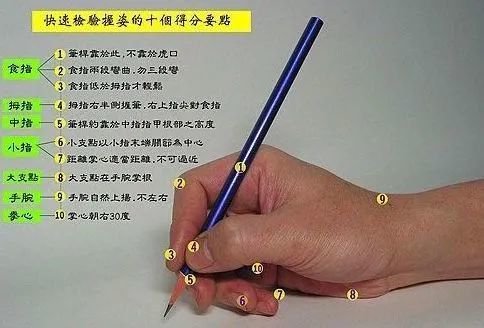
There are some key points not mentioned in the picture, but it is these details that determine the stretch and smoothness of your pen writing:
The angle between the pen and paper is approximately 50 to 75 degrees.
When holding a pen, you should not use your thumb to cover your index finger, or your index finger to cover your thumb. The thumb and index finger should remain slightly apart.
The pad of the index finger, the right half of the pad of the thumb, the first interphalangeal joint of the middle finger and the metacarpophalangeal joint of the index finger are in contact with the pen.
The pulp of the index finger and the right half of the pulp of the thumb are the main force-generating points, the joint between the first fingers of the middle finger is the secondary force-generating point, and the metacarpophalangeal joint of the index finger is used for positioning.
When writing strokes such as "hook" from the lower right to the upper left, the ring finger should lift the middle finger and use force to lift the hook. It is not advisable to lie softly on the paper.
During writing, your hands should be relaxed.
2. Hold the gel pen
Gel pens, roller pens, water pens, etc. are basically the same as pencils. Since it's easier to write strokes with a gel pen, you can hold the pen more lightly.
3. Pen holding method
During the pen writing process, the effective force should be the force that deforms the steel sheet, not the force perpendicular to the paper surface.
As shown in the picture:
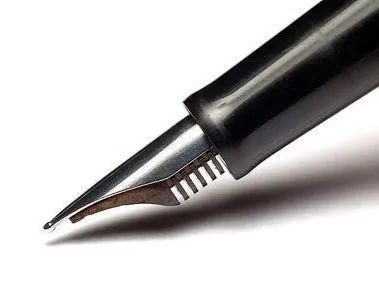
The pen barrel should be close to the tiger's mouth, and the angle between the pen and the paper is about 40 to 65 degrees.
Read, copy, copy, memorize, understand and apply, step by step.
Reading: Read posts, read words, as long as there are works, you can read them. When choosing a copybook, you are reading the copybook and choosing what you like.
G: Use transparent white paper to cover the copybook and follow the description. The most important thing for beginners is to correct the font shape, first practice the frame structure, and then pursue personal style.
Pro: You need a certain foundation before proceeding. Avoid looking at a painting. Write a painting before you can write the meaning of the post. Pursuing spiritual similarity, pro-writing is a long process and the only way to go.
Back: With your back, clear the entire copybook, throw it away, and write intuitively. If you face it too much, you will carry it on your back. It is best to carry it on your back naturally.
Yi: Yilin, create on the basis of Yilin, integrate your own style, and you can produce some independent works.
Use: writing couplets and posting notices. Calligraphy comes from life and serves life.
1. Two training methods for finger strength
The rubber band method (pressure on the opponent) is shown in the figure:
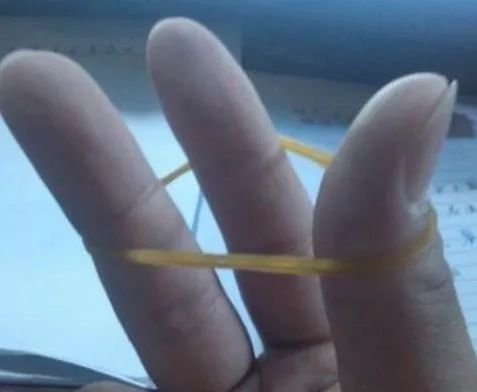
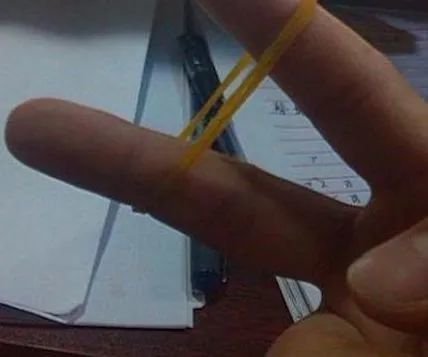
Plasticine method (pressure on pen)
Wrap the end of the pen barrel with plasticine or add weights. As shown in the picture
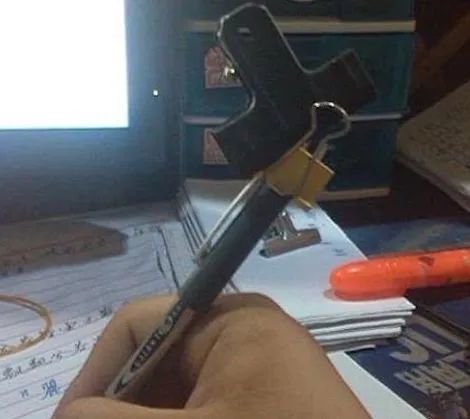
This method is great for improving finger strength.
2. Writing skills training
Pen strength training is a more practical method for beginners.
Writing tools: Use a pencil, 2B is fine, and use ancient calligraphy notes to practice (friendly reminder: don’t sharpen the pencil too sharp, it’s better to be rounder).
Sporadic time penmanship training: practice of broken and solid lines and curved lines
Pay attention to three key points: weight, thickness, exposed edge and hidden edge (that is, when you start and close the pen with or without a tip). The order is left to right and top to bottom, and priority can be from left to right.
Double hook method and tracing exercises
This is the key point.
Double-hook method: First, use the outer hook method to trace the outer frame of the example word, and then use the inner hook method to fill in the frame. In hard pen training, you can use a pencil to write the inner hook in the box as a single line according to the example writing method. There is no need to fill it in. After the double hook is completed, write it again next to it.
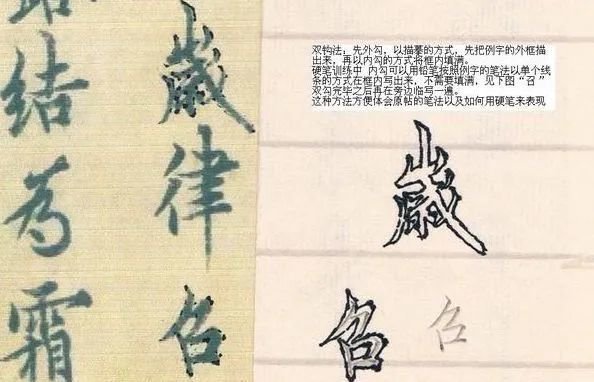
Each word requires time and solid basic skills, one step at a time, and avoid opportunism. When you step into the threshold of calligraphy, you must be in awe! The edge of a sword comes from sharpening, and the fragrance of plum blossoms comes from the bitter cold.








